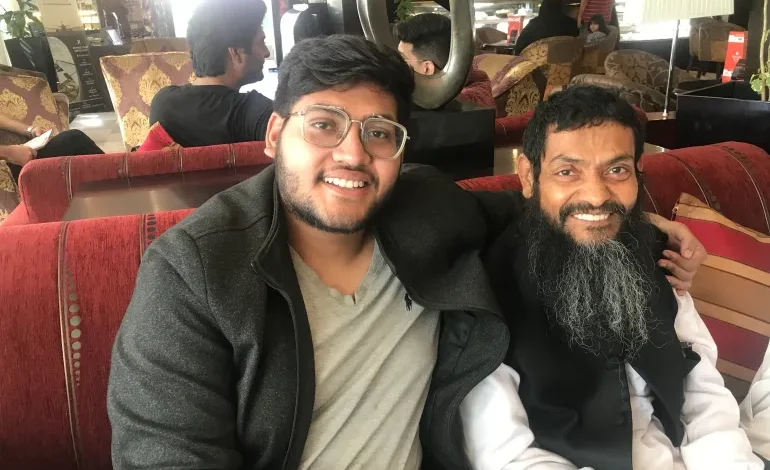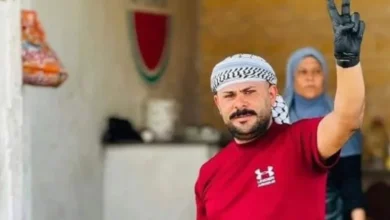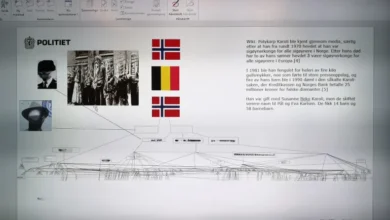Guantánamo: Sorry seems to be the hardest word
Clive Stafford Smith

It was very moving to watch the tracker that followed the United States air force C17 aircraft as it flew across the Atlantic and above the Straits of Gibraltar. I knew that seated on board was my Guantánamo client Ahmed Rabbani, going home to Karachi after 20 years of abuse in American custody.
On September 10, 2002, Pakistani government officials collected a $5,000 bounty for handing Ahmed over to the US with a story that he was a notorious terrorist called Hassan Ghul. Since then, his path has been one of unfathomable suffering.
Ahmed insisted from the start that he was not Ghul but a taxi driver from Karachi. Rather than run the risk it had wasted its money, the US took him to the Dark Prison in Afghanistan for 540 days of torture. Astoundingly, we later learned the US captured the real Ghul and brought him to the same prison – but then set him free while sending Ahmed to Guantánamo.
Once in Cuba, Ahmed was compliant for several years but eventually lost patience. Other detainees went home, including the leadership of the Taliban, but he, a self-described “nobody”, remained. So he went on hunger strike. I once joined his strike in sympathy for a week. Ahmed should probably be in the Guinness Book of Records because he persisted for seven years. All the time he was force-fed through the nose twice a day in a gratuitously painful way (condemned by the United Nations as a form of torture). He lost more than half of his body weight.
All along, Ahmed was determined to make something of his time in his horrible prison. He took up painting and developed a true talent. We argued endlessly with the US military to allow him to take his artwork home, and thankfully, under pressure again from the UN, he was allowed to take so much that we are having to make a special trip to Islamabad to pick it up. Twelve Pakistani artists, inspired themselves by his work, are joining him for a show in Lahore in May.
Ahmed eventually got into the communal section of the prison, where he was allowed to cook for his fellow prisoners – ironically, even while he was on his own hunger strike. We managed to get a number of his recipes through the censors and have been helping him develop his Guantánamo Cook Book, where each meal relates to one of the 62 methods of torture he underwent. Rohingya Strappado Chicken, for example, must be hung up for hours before cooking, much as he was suspended by the wrists in a deep hold in the Dark Prison.
While Ahmed languished in Guantánamo long after most people had left, the US military seemed to be vying to violate as many provisions of the UN Convention Against Torture as it could. At one point, we tried to negotiate his release if he would testify to the statements he made in detention against some of the “high-value detainees”. He was worried about even discussing this, and he only agreed to meet with the FBI because the high-value detainees concerned encouraged him that it was his only way out.
Yet everything he had said about these detainees was under torture, and Article 15 of the Convention Against Torture says, “Each State Party shall ensure that any statement which is established to have been made as a result of torture shall not be invoked as evidence in any proceedings, except against a person accused of torture as evidence that the statement was made.” So what the US wanted to do was illegal.
When we spent several days with the FBI discussing it, they refused to honour the agreement to free him because Ahmed insisted that he had lied under torture and would not repeat those lies against his fellow men, even if he were promised liberty. Now that he has left Guantánamo, the US military still plans to use his written statements as “reliable hearsay evidence” to secure a death sentence against another prisoner, Saudi citizen Abd al-Rahim al-Nashiri.
They won’t get away with it, of course, because we will stop them, but it does mark clearly the lengths to which the military will go to flout both the law and human decency.Of all the human elements of his plight, I found most difficult the fact that Ahmed had never, until Friday, met or touched his son, Jawad, who is now 20 years old. Ahmed had married just before he was kidnapped and he did not know his wife was pregnant. I have met Jawad several times, and he has been inspired by Abraham Lincoln and others to seek out a career as a human rights lawyer. I wish I could have witnessed their first hug, but my plane didn’t get there soon enough.
Yet it will be a rough road for Ahmed to settle in with a family he hardly knows. What becomes of him now? The US initially insisted that Ahmed and the 778 other Guantánamo detainees were the “worst of the worst terrorists” in the world. To clear Ahmed for release, the US spy agencies had to agree that he posed no threat to the US or its coalition allies. Of the 32 who still remain in US custody, 16 have also been cleared, so the US has been wrong in at least 764 of 779 cases. This is an astonishing 98 percent error rate: What other human endeavor has got it so wrong?
Ahmed thinks the US should pay compensation for torturing him and stealing 20 years of his life. While we will try, that is probably a pipe dream. The best we can hope to do is raise some funds through our Crowdfunder campaign to help him resettle. Then perhaps he will open the Guantánamo Restaurant and hang his art on the walls.










